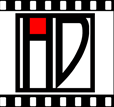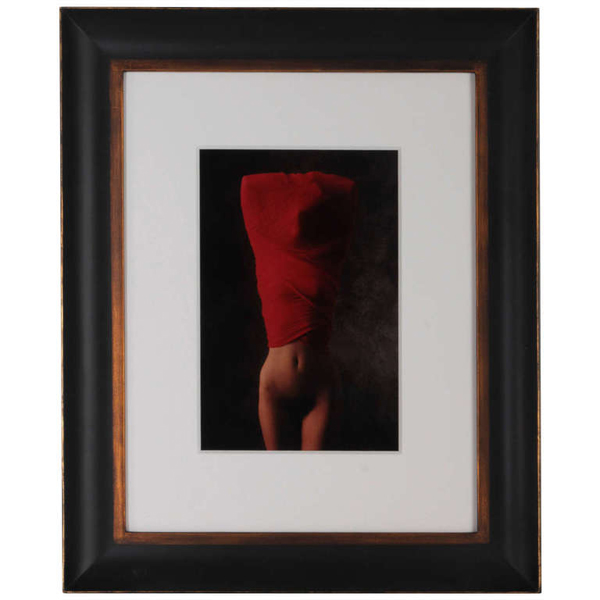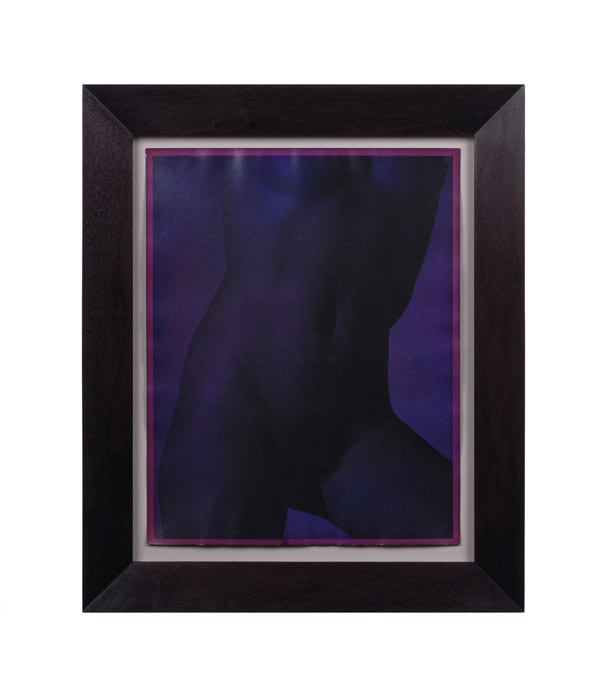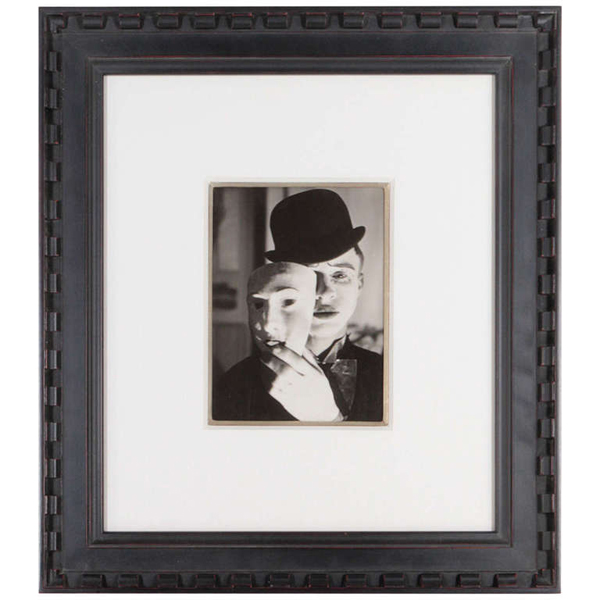Figurative Photography

Figurative Photography
-
Grant Mudford, Long Beach, Gelatin Silver Print 1979
GRANT MUDFORD (1944- ) Australia
Long Beach 1979
Gelatin silver print
Signed: Long Beach 1979, LB-24/2 (in pencil on back); Grant Mudford 1980 (script in ink)
Framed size: H: 28 ¼” x W: 32 7/16”
Price: $29,000
“Since he moved to Los Angeles from Australia in the late 1970s, Grant Mudford has composed photographs that crisply examine the streamlined geometries of West Coast architecture and landscape. Mudford has zeroed in on the abstract formal relationships lurking within the designs of gas stations, strip malls and apartment buildings. The geometrical arrangements highlighted in his photographs of the masterful modernist structures of Rudolf Schindler and Craig Ellwood have disclosed a link between their midcentury architecture and the contemporaneous hard-edge abstractions of L.A. painters John McLaughlin and Lorser Feitelson.” – Art in America, “Grand Mudford at Rosamund Felsen, September 2003
-
Christian Vogt, Nude Female from the “Red Series”, Dye Transfer photograph 1976
CHRISTIAN VOGT (b.1946) Switzerland
Nude Female from the “Red Series” 1976
Dye Transfer photograph
(continuous-tone color photographic printing process).
Matte black and gold wood frameSigned on back
Photograph illustrated: Christian Vogt: Photographs, The Master Collection, Vol. 1, by Davis Sue (Geneva: Roto Vision, 1980)
Marked: Print no. 12/33 1976
Framed: H: 21 5/8” x W: 17 7/16”Price: $17,500
Christian Vogt has exhibited internationally at venues including The Photographer’s Gallery, (London), the ICP (New York), the Kunsthaus (Zürich), the Yajima Gallery (Montreal), the Tel Aviv Museum (Isreal), the Rencontres Internationales (Arles), the Centre Pompidou (Paris), the Galerie Watari (Tokyo), the Preuss Museum (Norway), the Edwynn Houk Gallery (Chicago), the CCD Galerie (Düsseldorf) and the Kunstmuseum (Hannover) among many others.
His photography is included in numerous important collections such as the Bibliotheque Nationale (Paris), the Swiss Foundation for Photography (Winterthur), the Musée de l’Elysee (Lausanne), the Modern Museet (Stockholm), the Tel Aviv Museum (Tel Aviv) and the Polaroid Collection (Cambridge, USA). He currently resides in Basel, Switzerland.
-
Tim Gidal, Self Portrait, Gelatin Silver Print 1930
TIM GIDAL (Ignaz Nachum Gidalewitsch) (1909-1996) USA
Self-portrait 1930
Signed: Tim Gidal, self portrait 1930, photograph printed by photographer TG (script in ink on back)
H: 17 7/8” x W: 12 1/16” (framed)
German-born Israeli photojournalist and writer. Gidal studied law, history and art history in Munich and Berlin, and started photography as a Zionist student. His first published pictures appeared in the Münchener illustrierte Presse in 1929. After emigrating in 1933 he lived in Switzerland (where he wrote a doctoral dissertation on photojournalism), the Middle East, and India, contributing to numerous publications. Between 1938 and 1940 he worked for Picture Post, and 1942-5 for the British army magazine Parade. After moving to the USA in 1947 he was an editorial consultant for Life. He later held academic posts in America and Israel. His many books include Modern Photojournalism: Origin and Evolution 1910-1933 (1973).
-
Edward Weston, Elbow, Gelatin Silver Print 1935
EDWARD WESTON (1886-1958) USA
Elbow 1935
Gelatin silver print
Signed: 12-40. Edward Weston 1935 (pencil below photo)
Framed H: 17” x W: 14 9/16”
Edward Henry Weston was an American photographer, and co-founder of Group f/64. Most of his work was done using an 8 by 10 inch view camera. Weston was renowned as one of the masters of 20th century photography. His legacy includes several thousand carefully composed, superbly printed photographs that have influenced photographers around the world for 60 years. Photographing natural landscapes and forms such as artichoke, shells, and rocks, using large-format cameras and available light. The subtle use of tones and the sculptural formal design of his works have become the standards by which much later photographic practice has been judged.
Ansel Adams has written: “Weston is, in the real sense, one of the few creative artists of today. He has recreated the matter-forms and forces of nature; he has made these forms eloquent of the fundamental unity of the world. His work illuminates man’s inner journey toward perfection of the spirit.”
-
Alfred Stieglitz, Old & New, New York, Photogravure from Camera Work 1910
ALFRED STIEGLITZ (1864-1946) USA
Old & New, New York 1910
Photogravure from Camera Work, Oak frame in the Arts & Crafts style
Signed: Alfred Stieglitz Old & New, New York, RMG #1081.30 (all in pencil on back)
Image: H: 8” x W: 6 1/4”
Page size: H: 11” x W: 7 7/8”
Framed: H: 15 ¼” x 11 ¼”Price: $18,500
Alfred Stieglitz was an American photographer who was instrumental over his fifty-year career in making photography an acceptable art form alongside painting and sculpture. Many of his photographs are known for appearing like those other art forms, and he is also known for his marriage to painter Georgia O’Keeffe, most famous for her large-scale paintings of flowers.
Stieglitz was born the eldest of six children in Hoboken, New Jersey and raised in a brownstone on Manhattan’s Upper East Side. His father moved with his family to Germany in 1881. The next year, Stieglitz began studying mechanical engineering at the Technische Hochschule in Berlin and soon switched to photography. Traveling through the European countryside with his camera, he took many photographs of peasants working on the Dutch seacoast and undisturbed nature within Germany’s Black Forest and won prizes and attention throughout Europe in the 1880s.
From 1893 to 1896, Stieglitz was editor of American Amateur Photographer magazine; however, his editorial style proved to be brusque, autocratic and alienating to many subscribers. After being forced to resign, Stieglitz turned to the New York Camera Club (which was later renamed The Camera Club of New York and is in existence to this day) and retooled its newsletter into a serious art periodical known as Camera Notes. He announced that every published image would be a picture, not a photograph – a statement that allowed Stieglitz to determine which was which.
Big camera clubs that were the vogue in America at the time did not satisfy him; in 1902 he organized an invitation-only group, which he dubbed the Photo-Secession, to force the art world to recognize photography “as a distinctive medium of individual expression.” Among its members were Edward Steichen, Gertrude Käsebier, Clarence H. White and Alvin Langdon Coburn. Also in 1902 he ceased being editor of Camera Notes and in 1903 started a new independent journal of his own, Camera Work. Photo-Secession held its own exhibitions and its work was published Camera Work, which became the pre-eminent quarterly photographic journal of its day, although in later years its popularity declined markedly and it ceased publication in 1917.
From 1905 to 1917, Stieglitz managed the Little Galleries of the Photo-Secession at 291 Fifth Avenue (which came to be known as 291). In 1910, Stieglitz was invited to organize a show at Buffalo’s Albright Art Gallery, which set attendance records. He was insistent that “photographs look like photographs,” so that the medium of photography would be considered with its own aesthetic credo and so separate photography from other fine arts such as painting, thus defining photography as a fine art for the first time. This approach by Stieglitz to photography gained the term “straight photography” in contrast to other forms of photography such as “pictorial photography” which practiced manipulation of the image pre and/or post exposure.
In the 1930s, Stieglitz presided over two non-commercial New York City galleries, The Intimate Gallery and An American Place. It was at An American Place that he formed his friendship with the great 20th century photographer Ansel Adams. Adams displayed many prints in Stieglitz’s gallery, corresponded with him and also photographed Stieglitz on occasion. Stieglitz was a great philanthropist and sympathizer with his fellow human beings. He once received a phone call on one of Adams’s visits. A man wanted to show Stieglitz some work. He invited him over, looked at the prints, looked at the man in a rather disheveled state of affairs and looked at the work again. He then offered to buy one of the paintings, wrote him a check for $150, gave him five dollars and told him to get something good to eat.
-
Weegee, Pole Painter, Gelatin silver print c. 1955
WEEGEE (1899-1968) USA
Pole Painter c. 1955
Gelatin silver print
Signed: Photo by WEEGEE, collection of Suzanne and Hugh Johnston, (stamped in blue ink on back); 208 (in pencil on back); PHOTO BY WEEGEE N.Y.C. (round ink stamp on back)
Provenance: the artist; the Collection of Suzanne and Hugh Johnston (documentary filmmakers who met Weegee in 1956 and worked as colleagues, shooting experimental film footage using Weegee's special lenses)
Size: H: 9 1/8” x W: 8 1/8”
Framed size: H: 15 5/8” x W: 14 ½”
Price: $9,000
Weegee was the pseudonym of Arthur Fellig, an American photographer and photojournalist, known for his stark black and white street photography. Fellig's nickname was a phonetic rendering of Ouija, due to his frequent arrival at scenes only minutes after crimes, fires or other emergencies were reported to authorities. He is variously said to have named himself Weegee, or to have been named by either the girls at Acme or by a police officer. He is best known as a candid news photographer whose stark black-and-white shots documented street life in New York City. Weegee's photos of crime scenes, car-wreck victims in pools of their own blood, overcrowded urban beaches and various grotesques are still shocking, though some, like the juxtaposition of society grandes dames in ermines and tiaras and a glowering street woman at the Metropolitan Opera (The Critic, 1943), turned out to have been staged. In 1938, Fellig was the only New York newspaper reporter with a permit to have a portable police-band shortwave radio. He maintained a complete darkroom in the trunk of his car, to expedite getting his free-lance product to the newspapers. Weegee worked mostly at night; he listened closely to broadcasts and often beat authorities to the scene. Most of his notable photographs were taken with very basic press photographer equipment and methods of the era, a 4×5 Speed Graphic camera preset at f/16, @ 1/200 of a second with flashbulbs and a set focus distance of ten feet. He had no formal photographic training but was a self-taught photographer and relentless self-promoter. He is sometimes said not to have had any knowledge of the New York art photography scene; but in 1943 the Museum of Modern Art included several of his photos in an exhibition. He was later included in another MoMA show organized by Edward Steichen, and he lectured at the New School for Social Research. He also undertook advertising and editorial assignments for Life and Vogue magazines, among others. His acclaimed first book collection of photographs, Naked City (1945), became the inspiration for a major 1948 movie The Naked City, and later the title of a pioneering realistic television police drama series and a band led by the New York experimental musician John Zorn. Weegee also made short 16mm films beginning in 1941 and worked with and in Hollywood from 1946 to the early 1960s, both as an actor and a consultant. He was an uncredited special effects consultant and credited still photographer for Stanley Kubrick's 1964 film Dr. Strangelove or: How I Learned to Stop Worrying and Love the Bomb. His accent was one of the influences for the accent of the title character in the film, played by Peter Sellers. In the 1950s and 60s, Weegee experimented with panoramic photographs, photo distortions and photography through prisms. He made a famous photograph of Marilyn Monroe in which her face is grotesquely distorted yet still recognizable. For the 1950 movie The Yellow Cab Man, Weegee contributed a sequence in which automobile traffic is wildly distorted; he is credited for this as “Weegee” in the film's opening credits. He also traveled widely in Europe in the 1960s, and took advantage of the liberal atmosphere in Europe to photograph nude subjects.
-
Werner Rohde, Mask, Gelatin Silver Print c. 1920’s
WERNER ROHDE (1906-1990) Germany
Mask c. 1920s
Gelatin silver print
Signed on the back of the photo: Werkbundausstellung “Film und Foto” (typed on label); 9.) 9/ (in ink and red crayon); Kupfer ofun Rourk 60 m R 10.5 x 14.5 cm / ump ubonpposhm bu 6/5 10088 (all in pencil script); fmlg-Rohde Woopswerk (in pencil); Werner Rohde Malen Breuien Oobben 58 (ink script)
H: 21 7/16” x W: 18 13/16” (framed)
Price: $17,500
Werner Rohde’s visual play with the animate and inanimate draws him close to the aesthetics of the surrealists while maintaining a strong alignment with Germany’s new-vision avant-garde. Rohde experimented widely with double exposures, photomontage, perspective and dramatic lighting that reflected his interest in filmic effects. The son of a glass painter (a medium he would turn to later in life), Rohde took up photography during his studies at the Arts and Craft School in Halle. Like Kesting, Willy Zielke and Kretschmer, he participated in the 1929 ‘Film und foto’ exhibition in Stuttgart that remains one of the historical focal points for Germany’s new photographic vision. Despite this early recognition of his work, Rohde fell into obscurity after the war until the rediscovery of his photographs in the mid 1970s. Rohde’s fascination with the play between life and lifeless, animate and inanimate, has strong reverberations with surrealism. Masks, mannequins and paper models were used in his photographs to illuminate the uncanny. They were also employed in his self-portraiture in which he mimicked his idol Charlie Chaplin. These techniques of visual illusion provided a mnemonic tool for the images of his wife in which she is posed and photographed to resemble a doll or mannequin. In the act of art imitating life, ‘Wachspuppenkopf’ is uncanny in its mimicry of the human form with realistic teeth, eyes, skin and even the unusual detail of small wrinkles under the eyes. The downward angle, lighting and odd doubling of the neckline utilizes standard surrealist methods to infer life and movement.
-
Louviere & Vanessa, Chlorofemina, Neque (from “As if…”) 2005 Mixed media, pigment print, wax mixed with pigment, Edition: 2/5 (printed in 2008)
JEFF LOUVIERE (b.1971) USA
VANESSA S. BROWN (b.1970) USA
Chlorofemina, Neque (from “As if…”) 2005
Mixed media, pigment print, wax mixed with pigment
Edition: 2/5 (printed in 2008)
Signed: Louviere and Vanessa
Image H: 53” x W: 45”
Price: $35,000
“By collaborating, we put ourselves in the midst of alternating currents of decision and production, action and responsibility, decay and clarity-capturing the moment between ‘has been ‘ and ‘what will be.'”
Jeff Louviere has a background in graphic design and art direction, winning several national and international awards. Vanessa S. Brown was 12 when she made her first photographs, and was exhibiting at 17. Her work gained international acclaim even before she earned her BFA from Rochester Institute of Technology. Louviere received his MFA from Savannah College of Art and Design, and it was in Savannah, Georgia that Jeff and Vanessa met. Their first collaboration was a series of photo storyboards for a film they had written together. The two moved to New Orleans in 1998 and have been exhibiting nationally ever since.
Jeff Louviere and Vanessa Brown have been collaborating on photographic images and movies since they first met in the mid-90s. Under the moniker Louviere+Vanessa they have created moody, atmospheric visuals with various equipment, including scanners, 8mm film, destroyed negatives, wax and even blood, utilizing the Holga medium format camera, altering the negatives and creating assemblages
-
Eugene Omar Goldbeck, Indoctrination Division, Air Training Command, Lackland Air Base, San Antonio, Texas, July 19, 1947 , Gelatin silver print
EUGENE OMAR GOLDBECK (1892-1986) USA
Indoctrination Division, Air Training Command, Lackland Air Base, San Antonio, Texas, July 19, 1947
Signed: Natural Photo and News Service EO Goldbeck © photo (on matting); LR Conner EG 81
Size: H: 19” x W: 16 ½”; Size (with mat): H: 24” x W: 20”
Framed: H: 26 5/8” x W: 23 7/8”
Price: $6,500
Known as the “unofficial photographer of America’s military,” Goldbeck conducted three-year tours to all of the major military bases in and outside of the United States until demand diminished for military group photos after World War II. He pushed the limits of his craft by working with larger and larger groups in striking designs. For his record setting group shot, in which 21,765 men were arranged to represent the Air Force insignia, he spent more than six weeks building a 200-foot tower and making blueprints of the formation and attire of his subjects. The photograph was subsequently featured in Life magazine and became the most frequently reproduced of his prints.
-
Ruben Chambers, Torso, 1945
RUBEN CHAMBERS USA
Torso 1945
Signed: Torso 1945, Ruben Chambers (in pencil on back) Ruben Chambers, 1945 (on back)
Size: H: 14” x W: 11”
Framed size: H: 17 13/16” x W: 14 13/16” -
Werner Rohde, Self-portrait, Silver gelatin print 1926
WERNER ROHDE (1906-1990) Germany
Self-portrait 1926
Silver gelatin print, ebonized wood frame
Signed: Werner Rohde 1926 (pencil signature and date on back on photo); inv. 3RMG 1081.27
Photo: H: 6 13/16” x W: 4 15/16”
Framed: H: 16 5/16” x W: 14 3/8”Price: $38,000
Werner Rohde’s visual play with the animate and inanimate draws him close to the aesthetics of the surrealists while maintaining a strong alignment with Germany’s new-vision avant-garde. Rohde experimented widely with double exposures, photomontage, perspective and dramatic lighting that reflected his interest in filmic effects. The son of a glass painter (a medium he would turn to later in life), Rohde took up photography during his studies at the Arts and Craft School in Halle. Like Kesting, Willy Zielke and Kretschmer, he participated in the 1929 ‘Film und foto’ exhibition in Stuttgart that remains one of the historical focal points for Germany’s new photographic vision. Despite this early recognition of his work, Rohde fell into obscurity after the war until the rediscovery of his photographs in the mid 1970s.
Rohde’s fascination with the play between life and lifeless, animate and inanimate, has strong reverberations with surrealism. Masks, mannequins and paper models were used in his photographs to illuminate the uncanny. They were also employed in his self-portraiture in which he mimicked his idol Charlie Chaplin. These techniques of visual illusion provided a mnemonic tool for the images of his wife in which she is posed and photographed to resemble a doll or mannequin. In the act of art imitating life, ‘Wachspuppenkopf’ is uncanny in its mimicry of the human form with realistic teeth, eyes, skin and even the unusual detail of small wrinkles under the eyes. The downward angle, lighting and odd doubling of the neckline utilizes standard surrealist methods to infer life and movement.
-
Barry L. Thumma, Face of America, Gelatin silver print 1980
BARRY L. THUMMA (1947-2003) USA
Face of America 1980
Gelatin silver print
Size: H: 13 3/8” x W: 11”
Size (with board): H: 14” x W: 11”
Size (framed): H: 21 ¼” x W: 17”
Price: $2,750
Barry L. Thumma, a former New Era photographer, covered four presidents as White House photographer for The Associated Press. In his 20-year career with the AP, he traveled on more than 100 Air Force One flights to photograph presidents Jimmy Carter, Ronald Reagan, George H.W. Bush and Bill Clinton. He also photographed Pope John Paul II, Jerry Falwell, Mikhail Gorbachev, Michael Deaver, Alan Greenspan and Donald Rumsfeld, among other personalities and politicians of his time. He was a member of the White House News Photographers Association. Thumma began his career in 1967 as a part-time photographer for the Lancaster New Era. He joined the Associated Press in 1973 in Cincinnati, where he covered the Reds and the Bengals. After two years as the Ohio photo editor, Thumma moved to Washington, D.C. to cover the White House. He also captured heartbreaking images of the famine in Ethiopia, NASA space flight operations and troop actions in the field.












